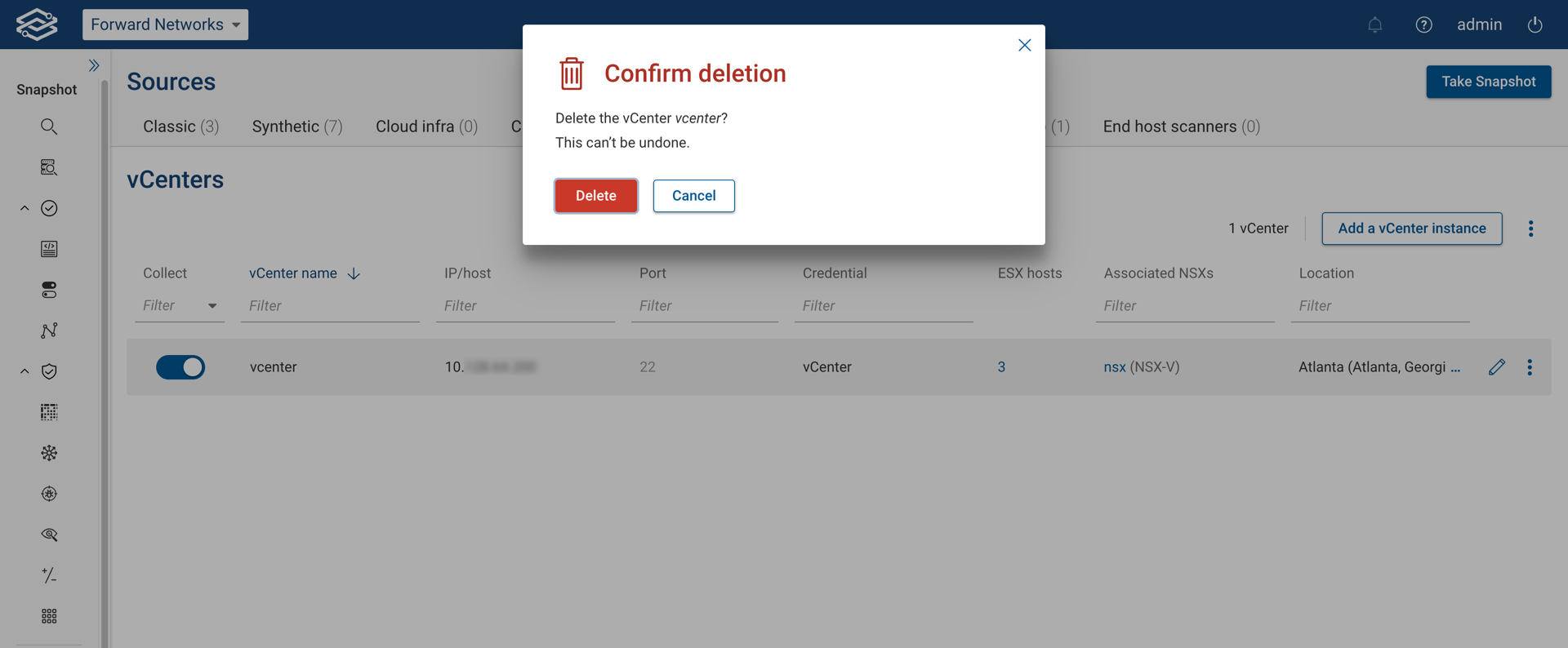VMware NSX & vCenter Setup
Forward Enterprise is able to model your VMware vCenter servers, ESX hosts, vSwitches, distributed vSwitches, and NSX infrastructure.
VMware ESX hosts are automatically discovered by connecting to VMware vCenter servers via APIs.
Adding an ESX manually is not supported
Prerequisite
A Forward Collector must be installed and connected.
Adding NSX-T Managers
Setup
Go to the Sources page, select NSX-T from the VMware NSX & vCenter dropdown.
Click Setup up NSX-T Data Collection to launch the NSX-T Setup Wizard.
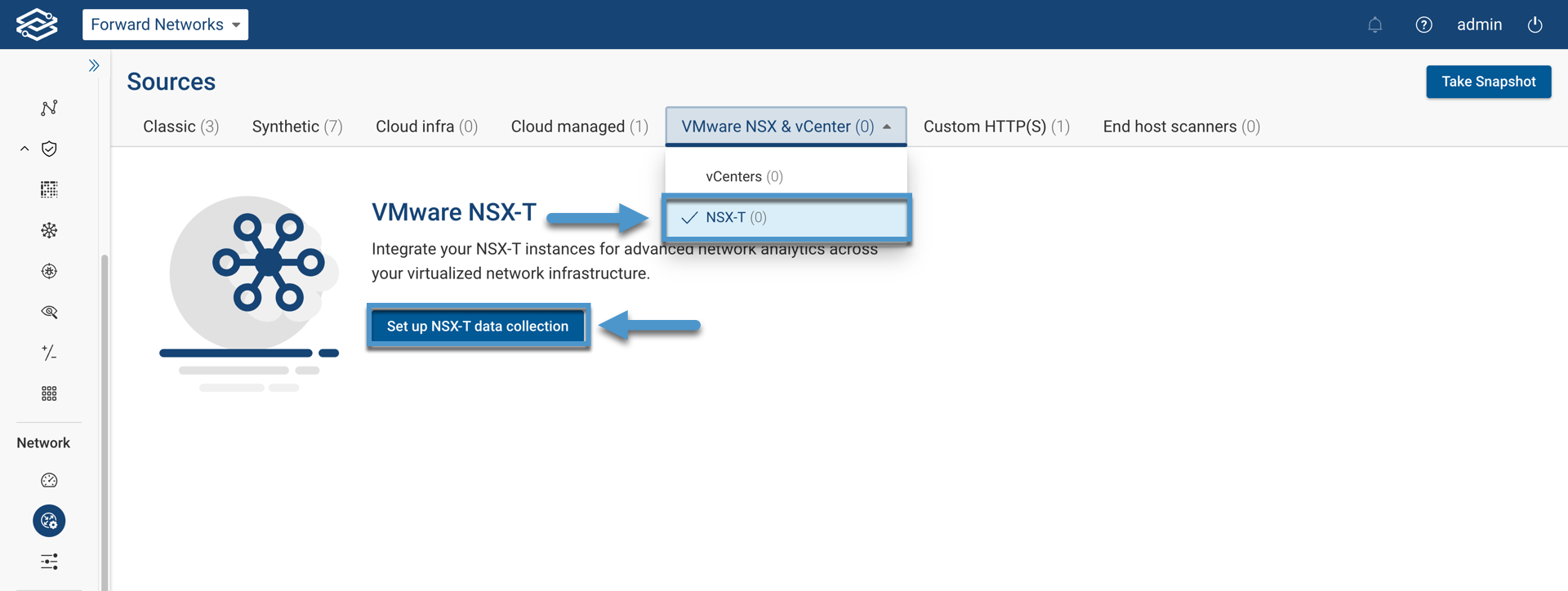
Step 1: Add an NSX-T Manager
Provide the following information:
- Name - Assign a unique name to the NSX-T Manager for easy identification.
- IP/Host - Enter the IP address or hostname of the NSX-T Manager.
- Port (optional) - Specify the port number if your NSX-T Manager uses a non-standard port (optional).
- Credential - Choose from existing credentials or create a new set by selecting New Credential. For new credentials, provide a name, username, and password, then click Add.
- Jump Server (Optional): Select a jump server from the dropdown if needed.
Validate connectivity by clicking Test. Successful connectivity will be indicated by a confirmation message.
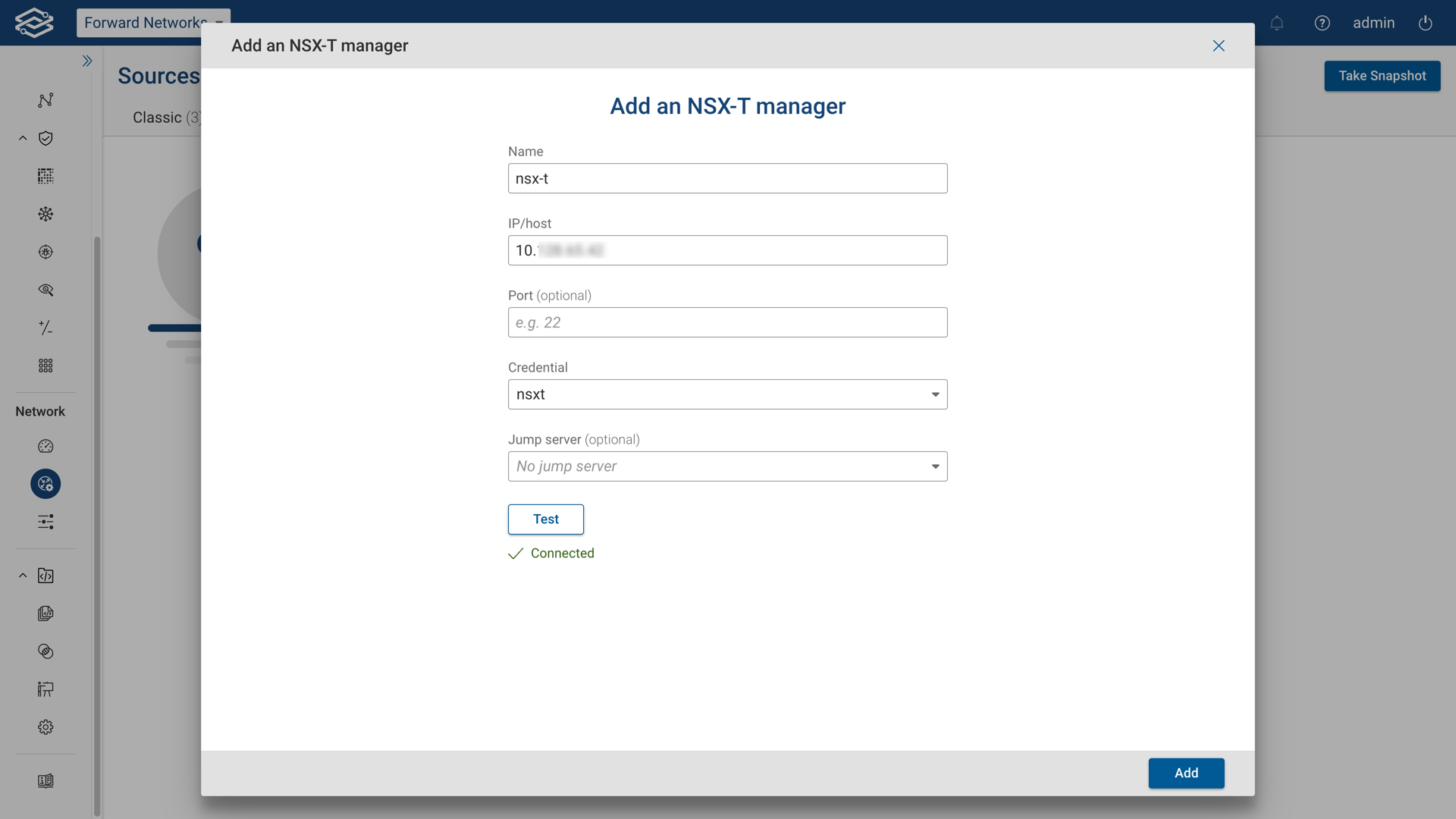
Step 2: Summary: vCenter Discovered
Upon successfully adding an NSX-T Manager, a summary page will display. This summary includes a list of all discovered vCenter instances, indicating which are associated and which are not.
You can add any unassociated vCenters from the NSX-T table.
Select Done when finished.
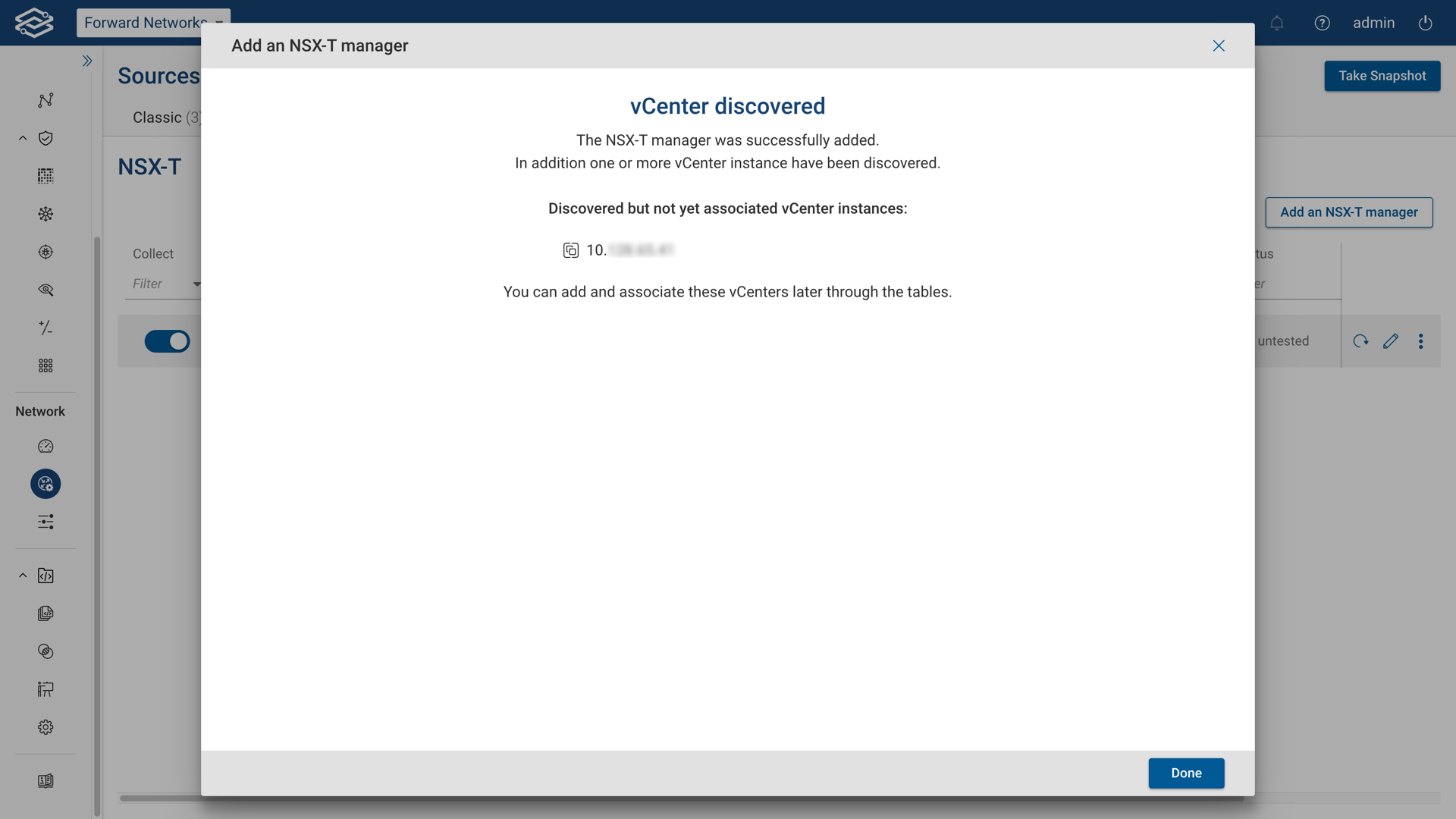
Editing NSX-T Managers
Clicking the Edit icon at the end of each row will open the Edit NSX-T Manager pane.
To modify NSX-T Manager settings, click the Edit icon in the list corresponding to the NSX-T Manager. Adjust the settings as needed and save your changes.
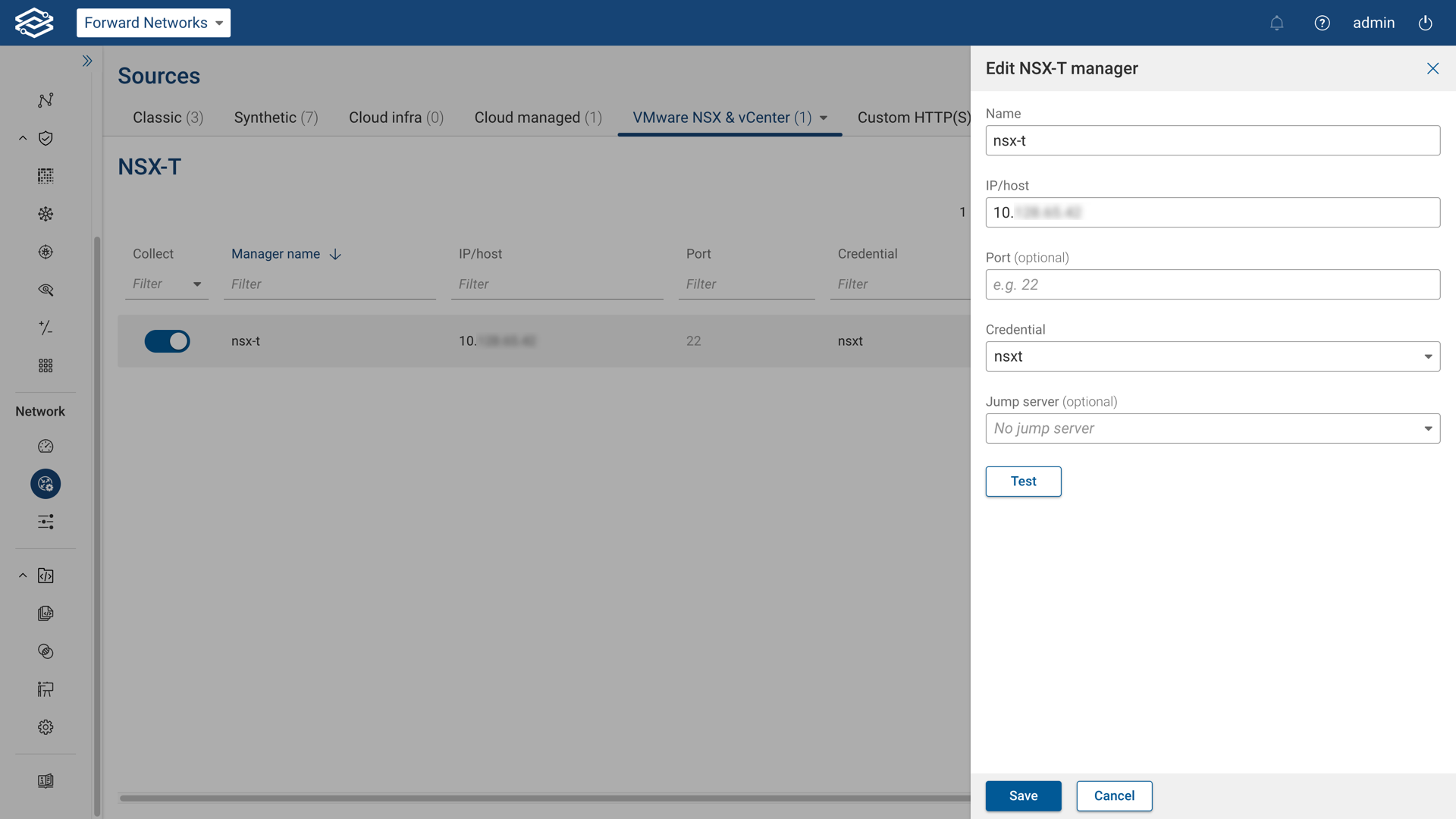
Deleting NSX-T Managers
To remove an NSX-T Manager, locate the Kebab menu icon next to the relevant NSX-T Manager, select Delete, and confirm the action.
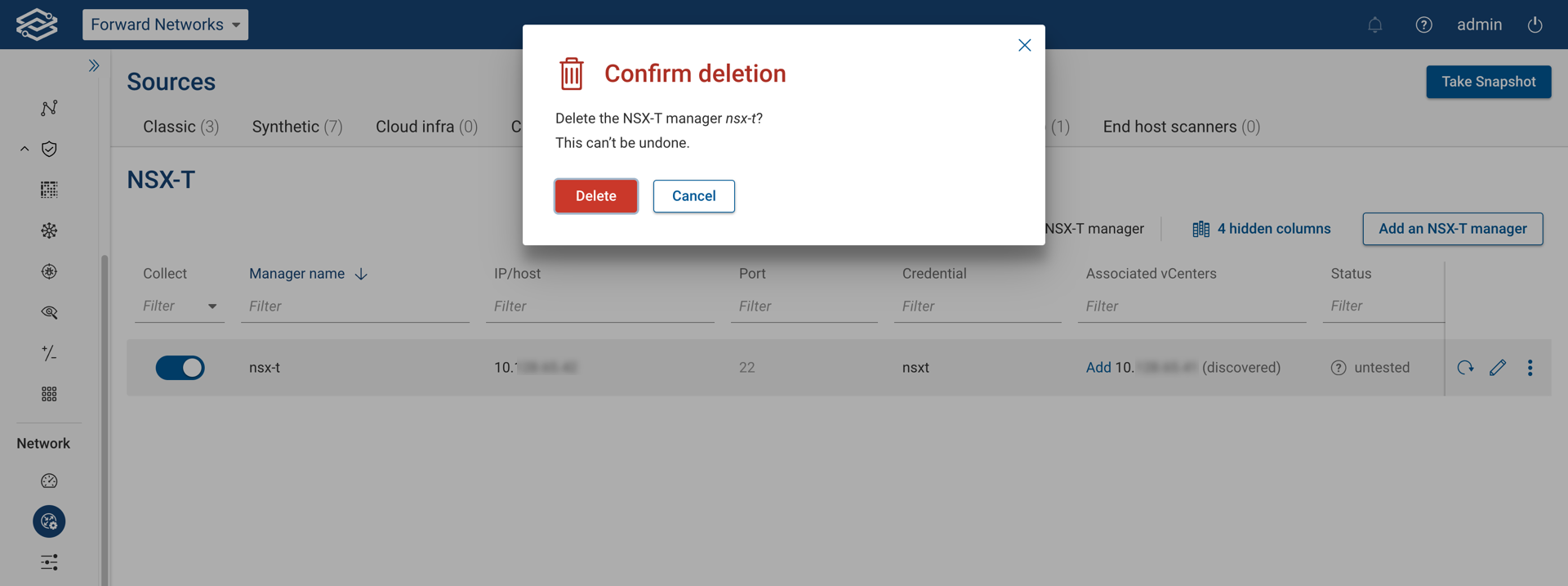
Adding Unassociated vCenters from an NSX-T Manager
The NSX-T table provides a quick overview of associated vCenters. To add an unassociated vCenter, click Add next to its listing, to start the vCenter setup wizard.
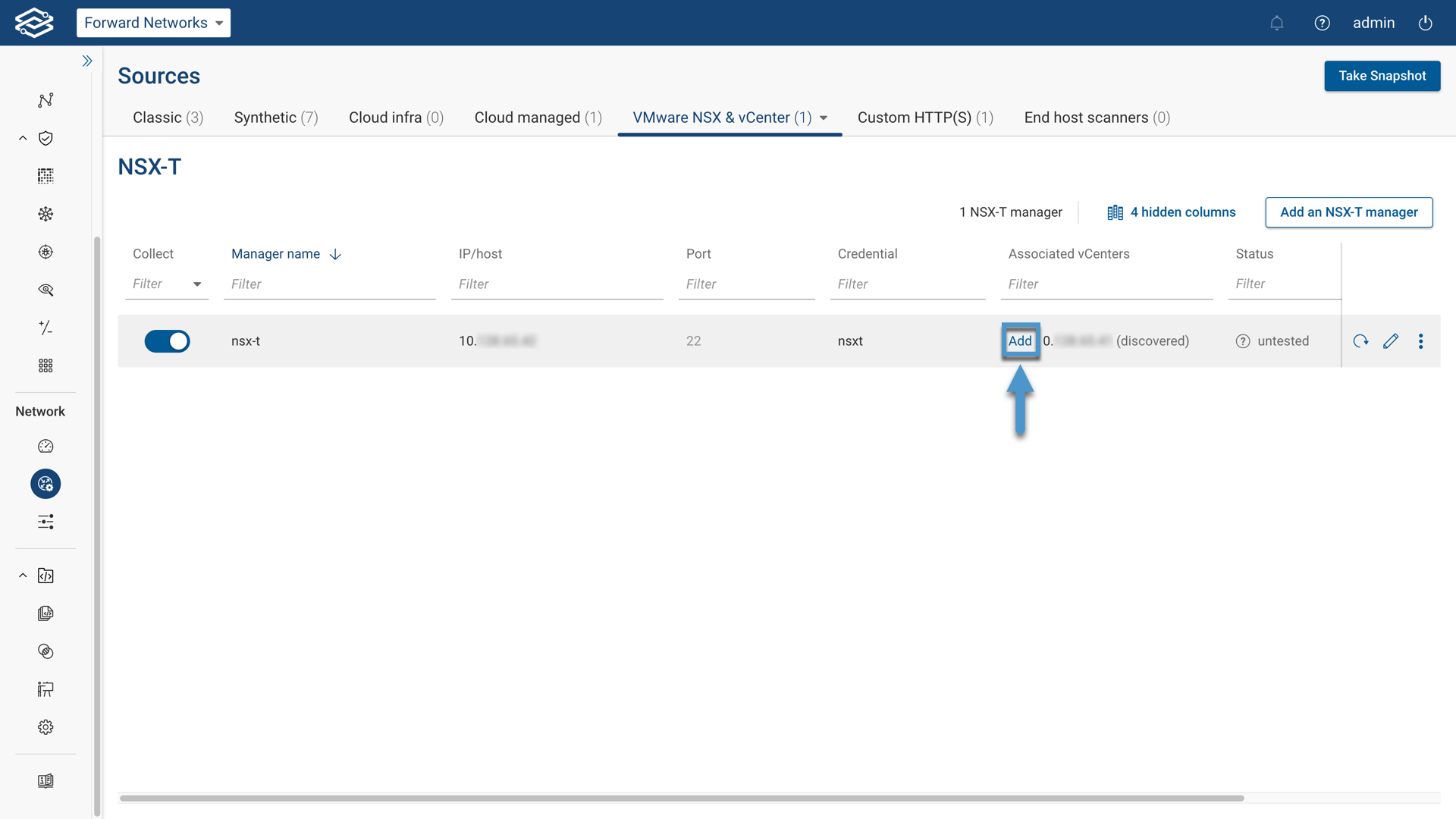
Step 1: Connect vCenter
Fill in the required account details:
- VMware vCenter Name - Assign a unique name to the vCenter instance for easy identification.
- IP/host - Enter the IP address or hostname of the vCenter instance.
- Port (Optional) Specify the port number if the vCenter uses a non-standard port.
- Credential - Choose from existing credentials or create a new set by selecting New Credential. For new credentials, provide a name, username, and password, then click Add.
- Jump Server (Optional): Select a jump server from the dropdown if required.
Validate connectivity by clicking Test. Successful connectivity will be indicated by a confirmation message.
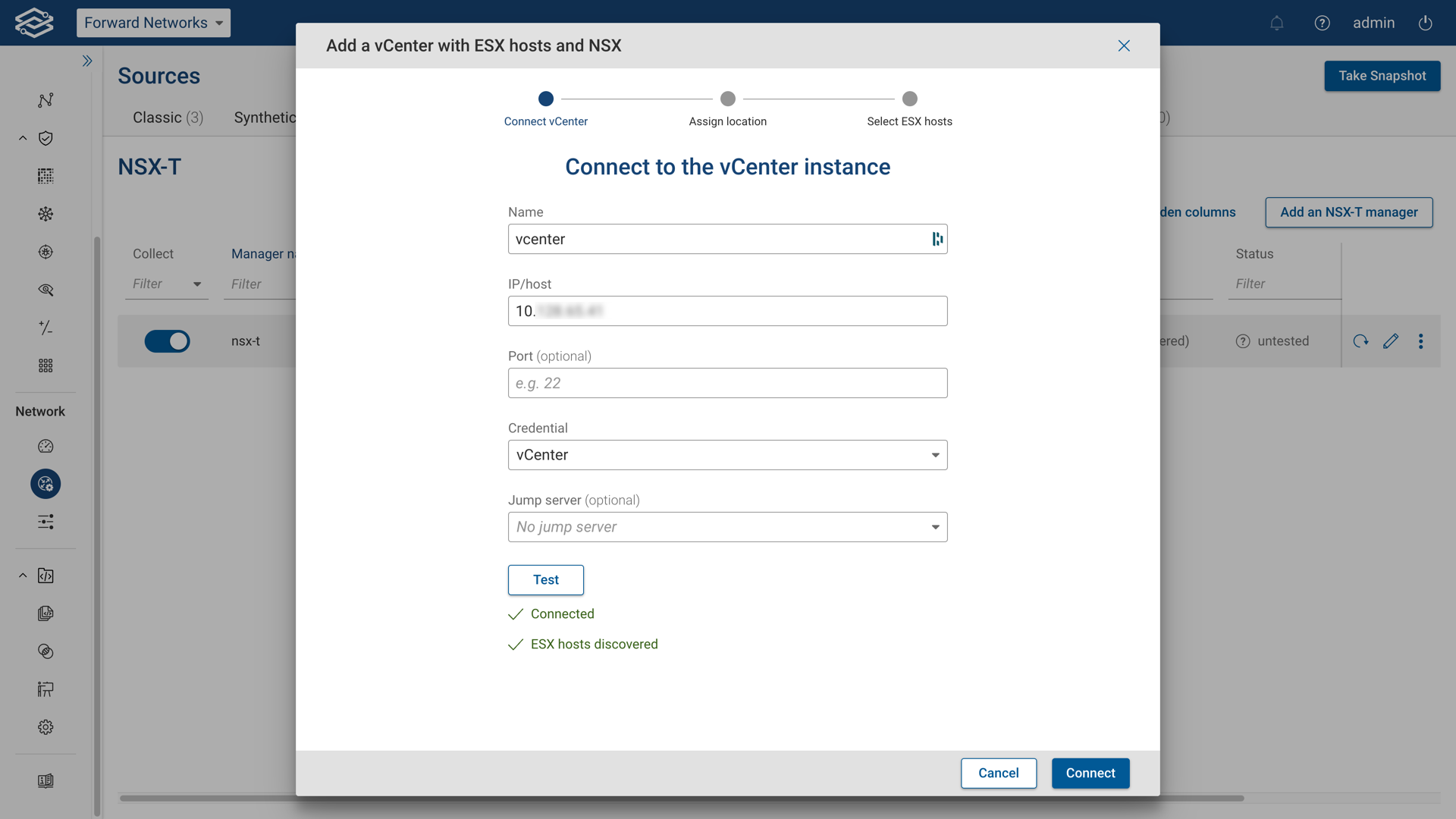
Step 2: Assign Locations (Optional)
Assign the vCenter instance to a location from the dropdown or proceed to the next step.
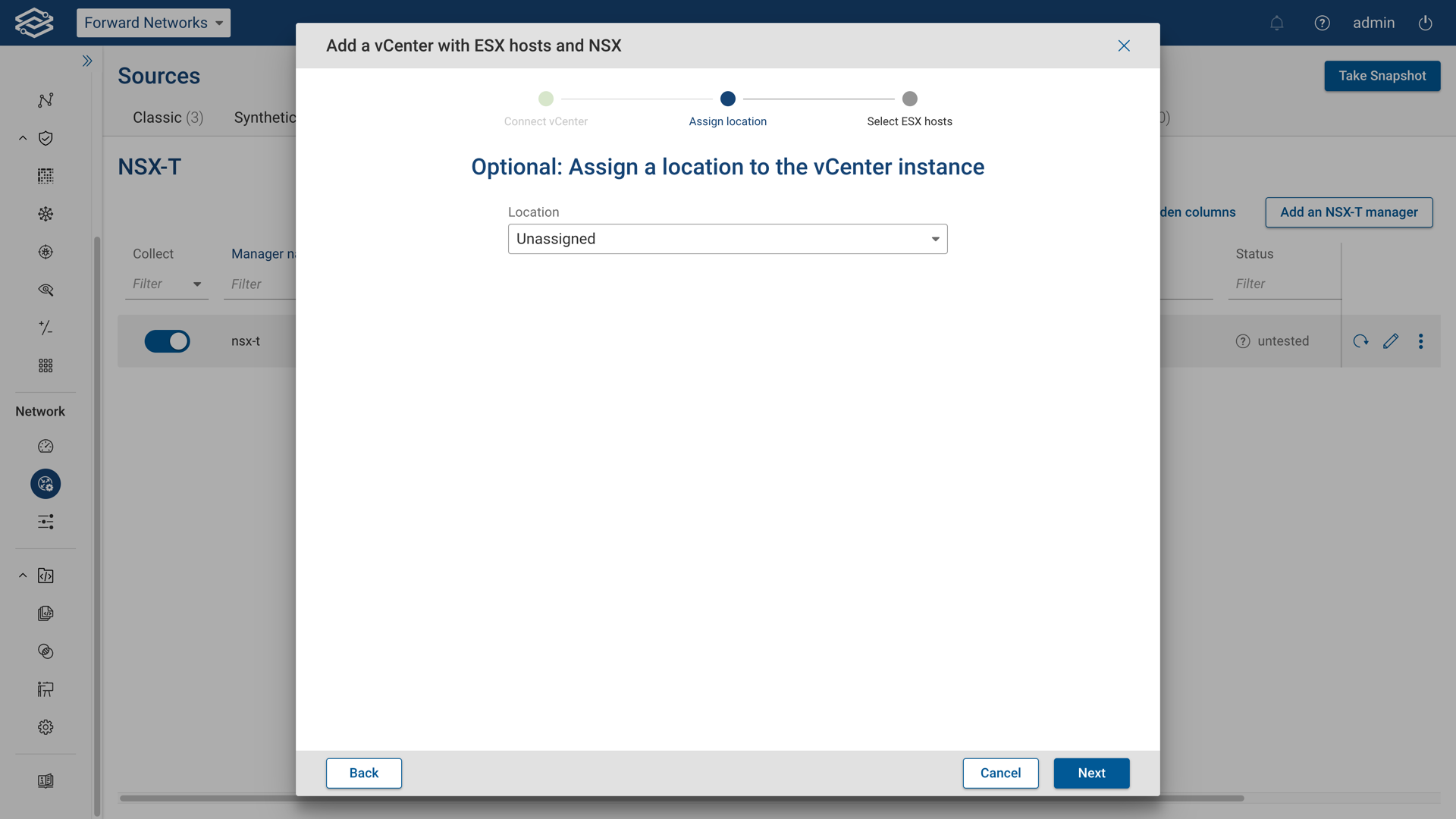
Step 3: Select ESX hosts to collect (Optional)
Select the ESX hosts you wish to include for collection. If ESX host data collection is not needed, proceed to the next step.
If you haven't provided valid ESX host credentials and don't need or want to collect from an ESX host, click Next to proceed.
If you have provided valid ESX host credentials, the Status field of a given ESX host should transition from Testing to Connected after a few seconds.
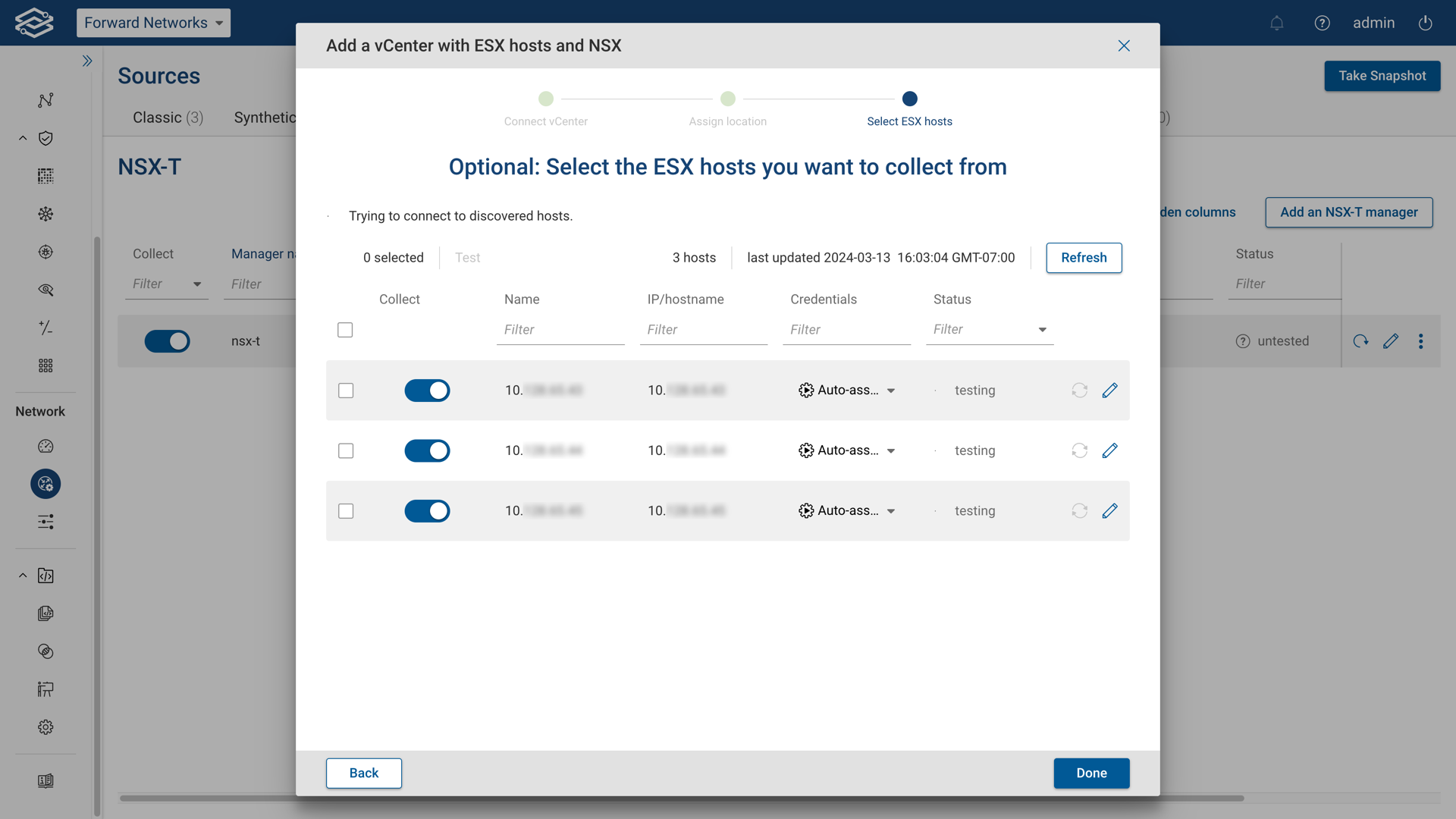
Upon completion of the setup process, the vCenter instance will be in the vCenter table of the VMware NSX-T & vCenter tab. You can manage collection settings from here and edit or delete the vCenters as needed.
Adding vCenter Instances
Setup
To start the setup process, navigate to Sources > VMware NSX & vCenter > vCenter and click the Add a vCenter Instance button.
The setup wizard will guide you through each step.
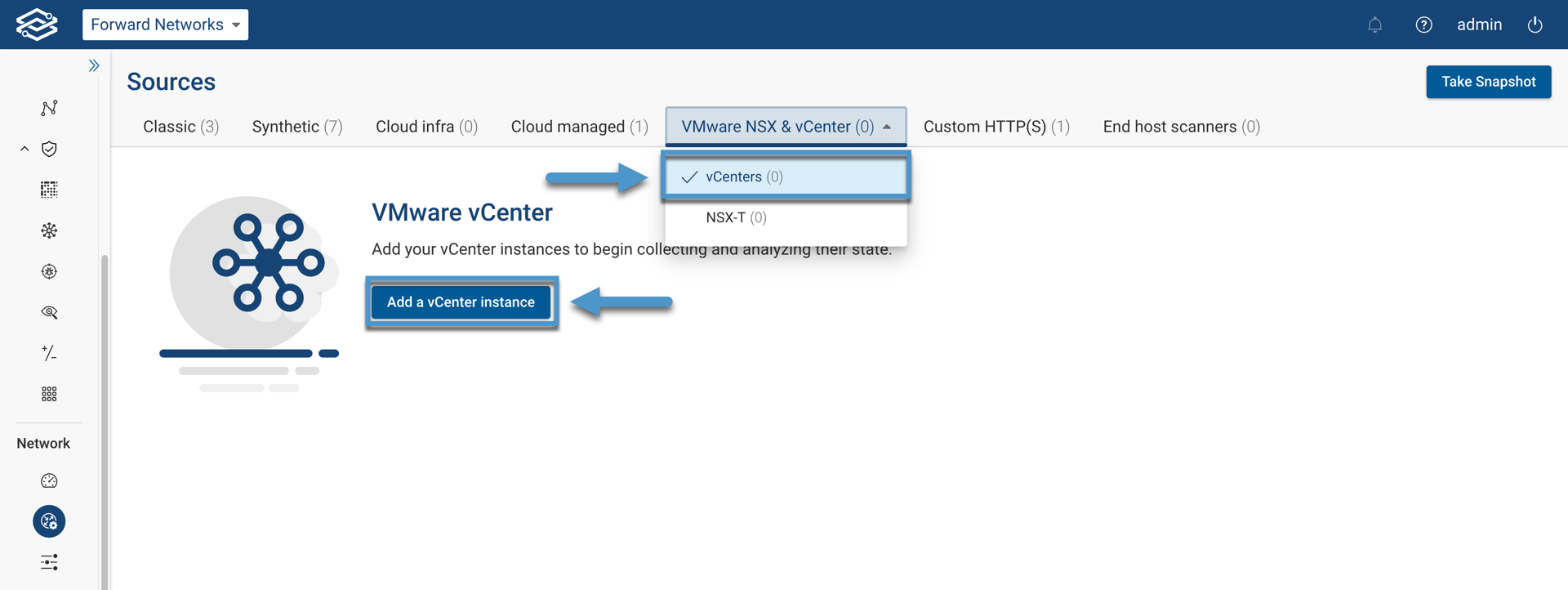
Step 1: Connect vCenter
Fill in the required account details:
- VMware vCenter Name - Assign a unique name to the vCenter instance for easy identification.
- IP/host - Enter the IP address or hostname of the vCenter instance.
- Port (Optional) Specify the port number if the vCenter uses a non-standard port.
- Credential - Choose from existing credentials or create a new set by selecting New Credential. For new credentials, provide a name, username, and password, then click Add.
- Jump Server (Optional): Select a jump server from the dropdown if needed.
Validate connectivity by clicking Test. Successful connectivity will be indicated by a confirmation message.
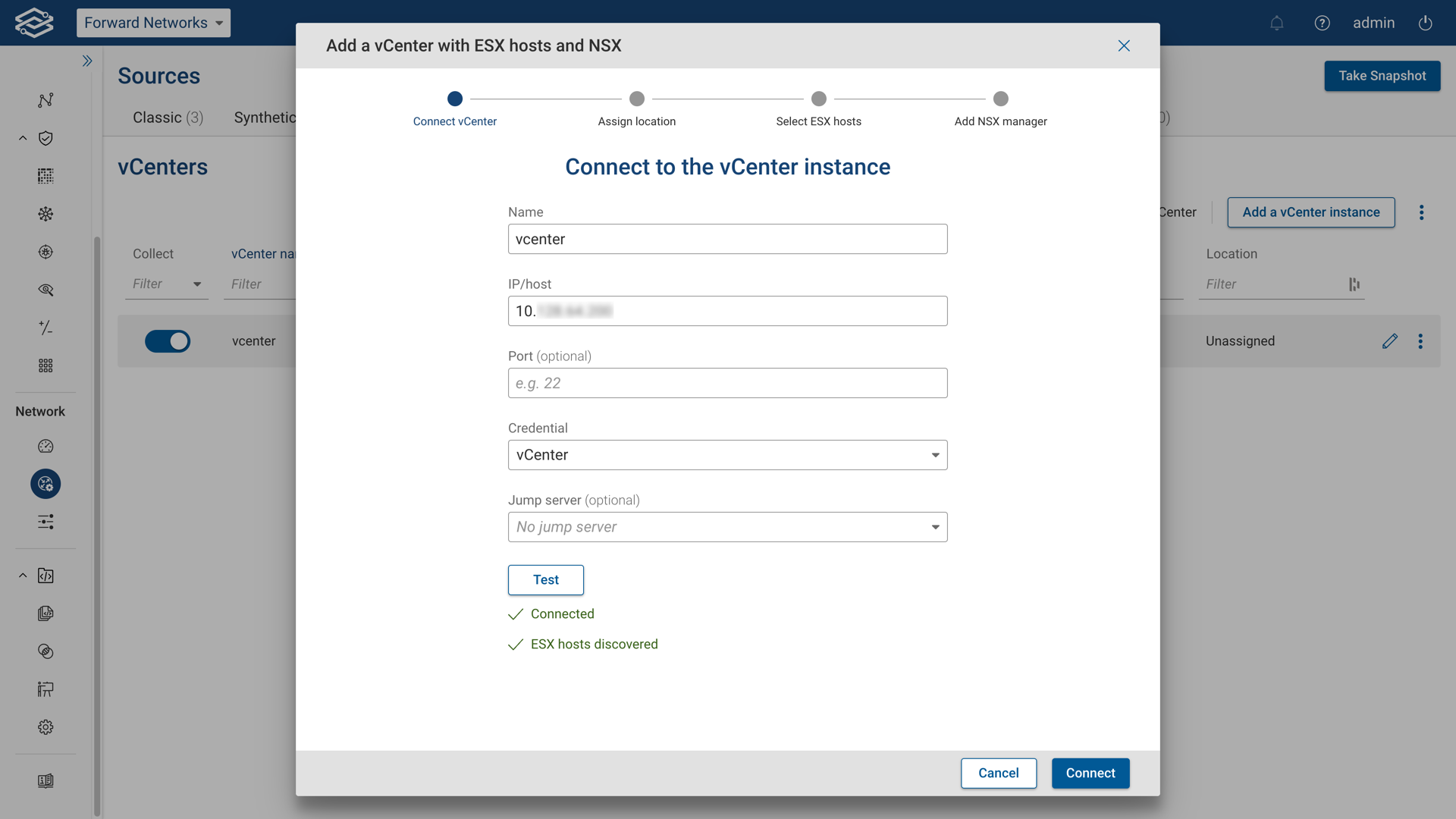
Click Connect to continue.
Step 2: Assign Locations (Optional)
Assign the vCenter instance to a location from the dropdown or proceed to the next step.
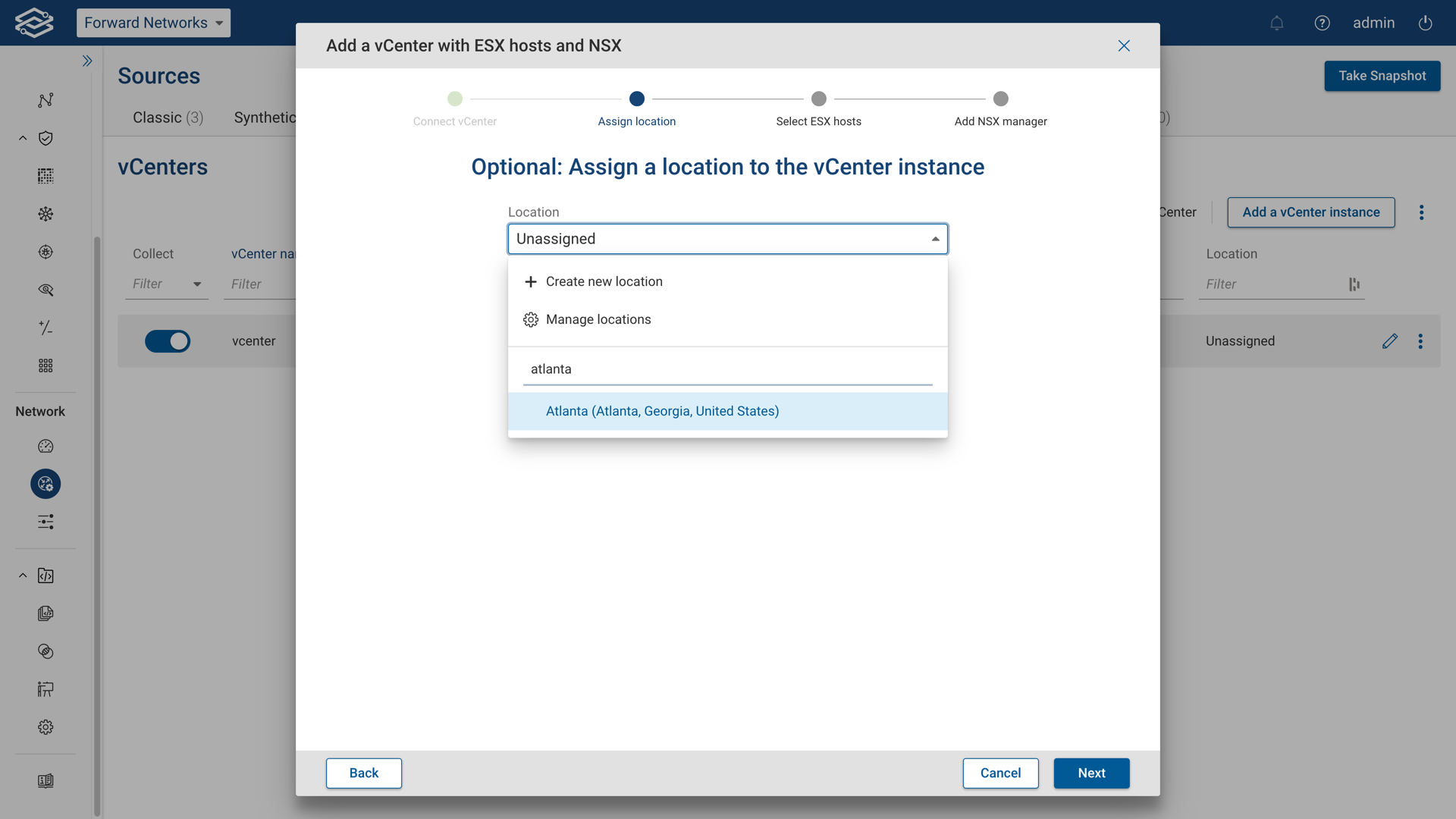
Step 3: Select ESX hosts (optional)
The collection from ESX hosts is optional when modeling VMware virtual machines only, but in this case ESX's MAC/ARP table will not be available.
Collection from ESX hosts is required for VMware NSX modeling (the next hop MAC address is required to model L3 traffic out of the ESX).
Select the ESX hosts you wish to include for collection. If ESX host data collection is not needed, proceed to the next step.
If you haven't provided valid ESX host credentials and don't need or want to collect from an ESX host, click Next to proceed.
If you have provided valid ESX host credentials, the Status field of a given ESX host should transition from Testing to Connected after a few seconds.
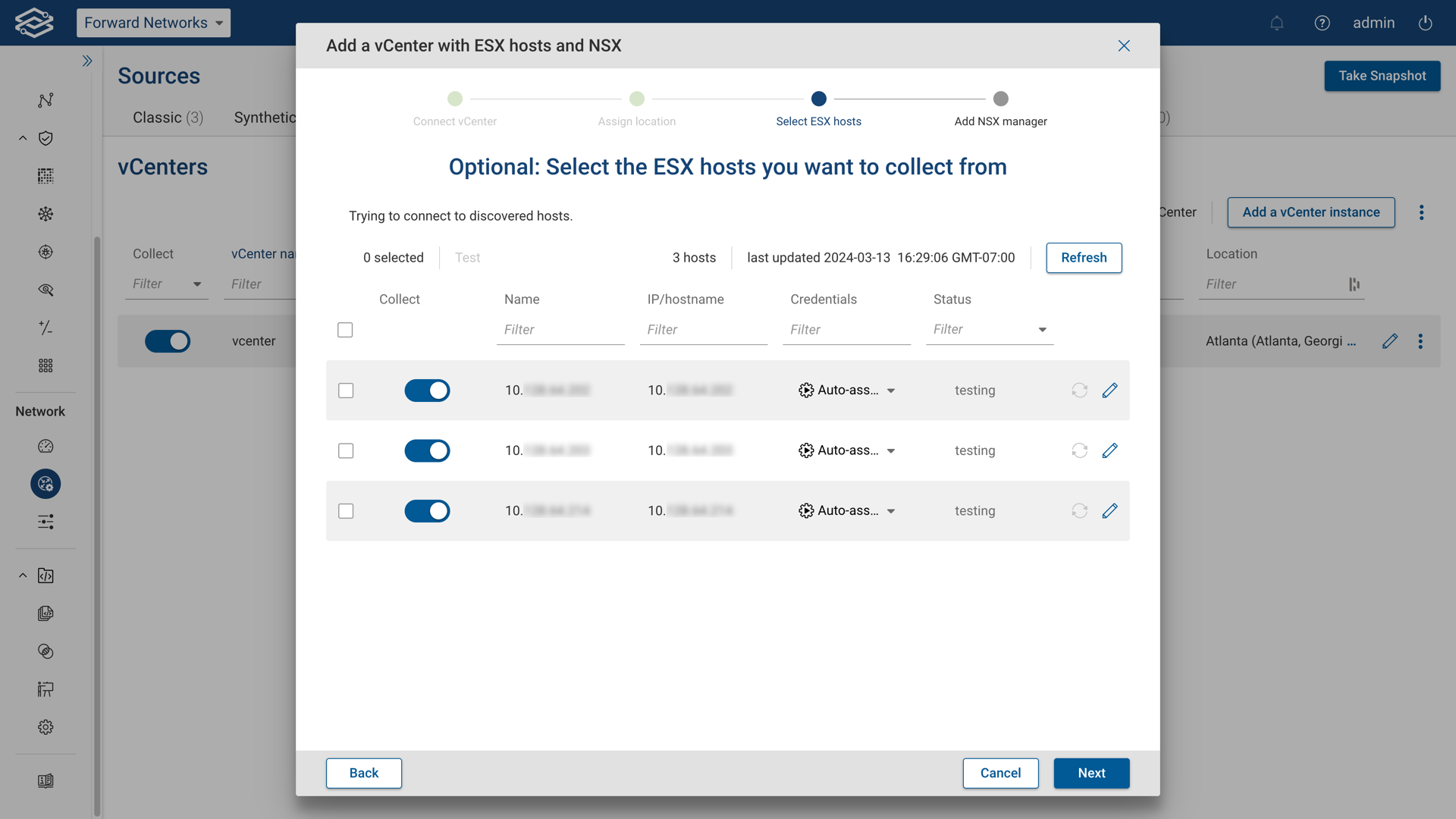
Click Next to proceed.
Step 4: Add NSX-V manager (optional)
Add an NSX-V Manager by providing the following:
- Name - Assign a unique name to the vCenter instance for easy identification.
- IP/host - Enter the IP address or hostname of the vCenter instance.
- Port (Optional) Specify the port number if the vCenter uses a non-standard port.
- Credential - Choose from existing credentials or create a new set by selecting New Credential. For new credentials, provide a name, username, and password, then click Add.
- Jump Server (Optional): Select a jump server from the dropdown if needed.
Validate connectivity by clicking Test. Successful connectivity will be indicated by a confirmation message.
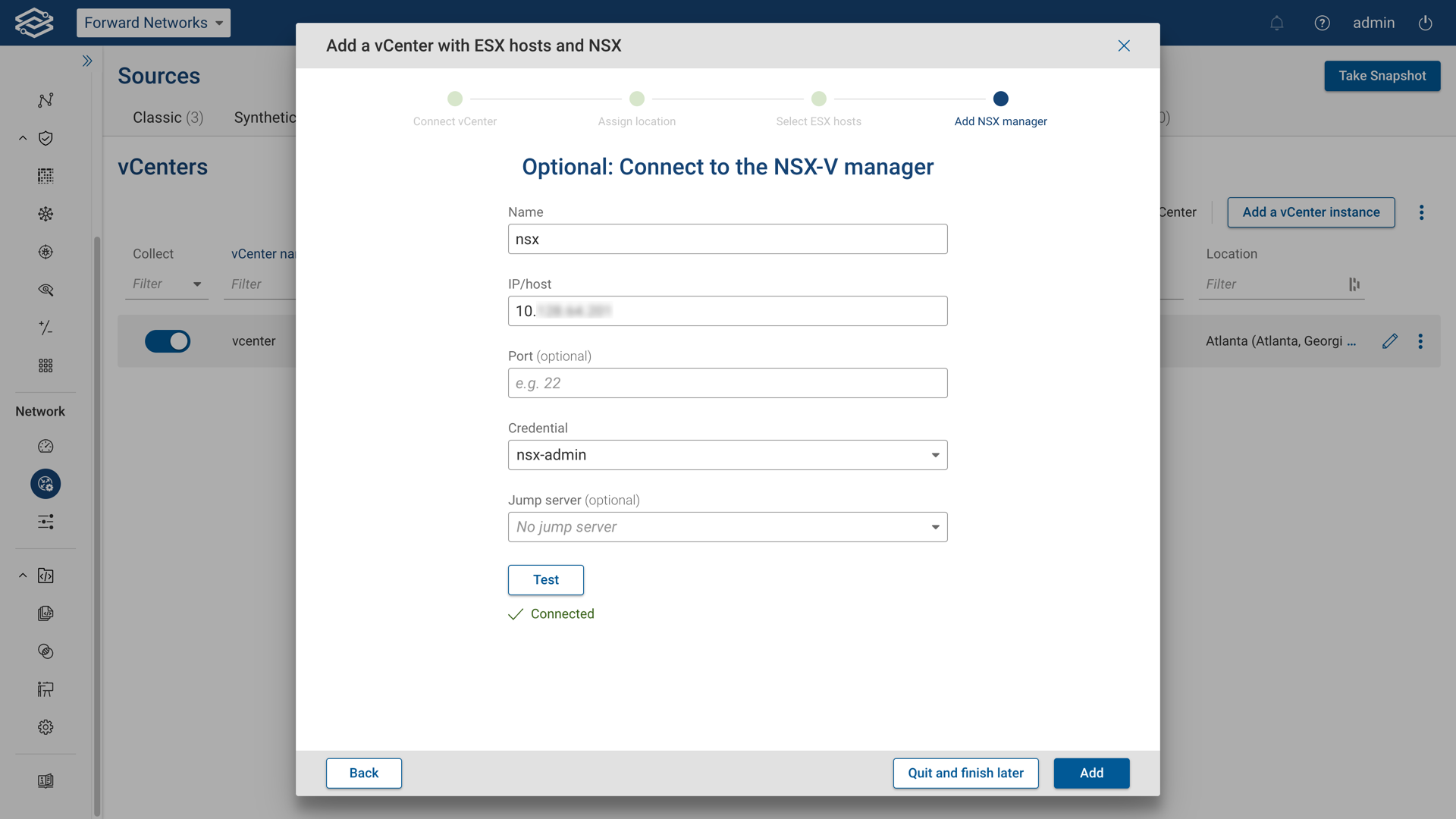
Click Add to finish the setup.
You should see the vCenter instance in the vCenter table of the VMware NSX-T & vCenter tab.
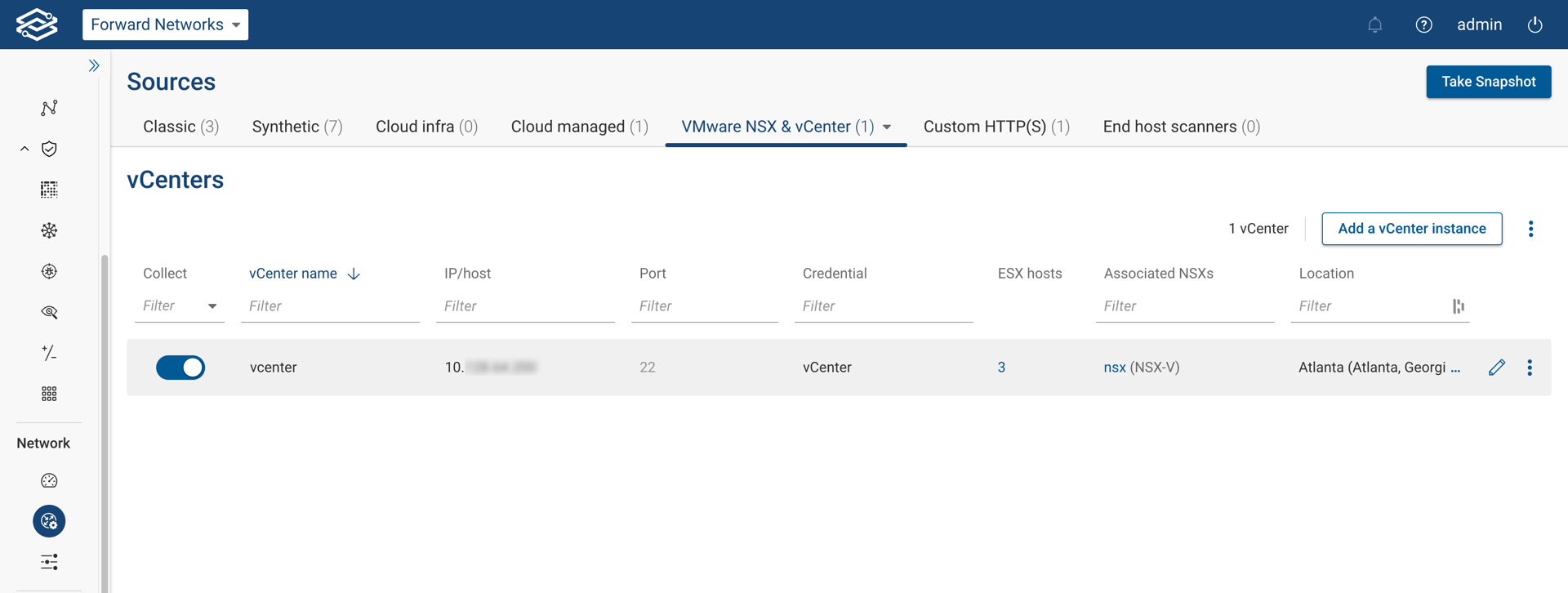
To enable or disable a vCenter from future collections, select/deselect the Collect toggle button.
The VMware environment is now ready for collection.
Editing vCenter, Hosts, and NSX
To edit the vCenter account, click the Edit icon on the right, change any parameter, test the connection, and finally, click Save.
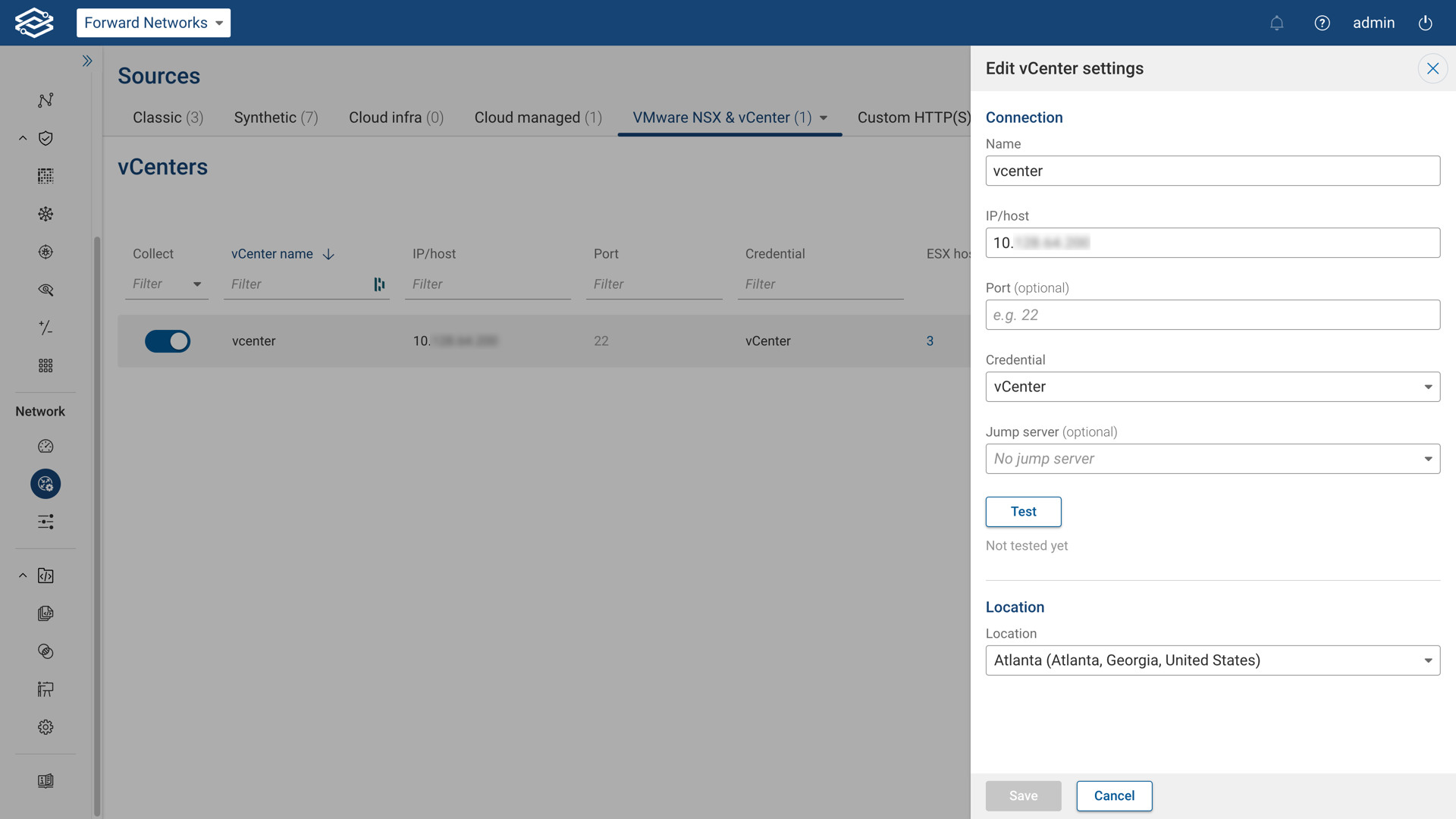
To add or remove an ESX host from future collections, click the link in the ESX Hosts column; and select/deselect the related Collect toggle button.
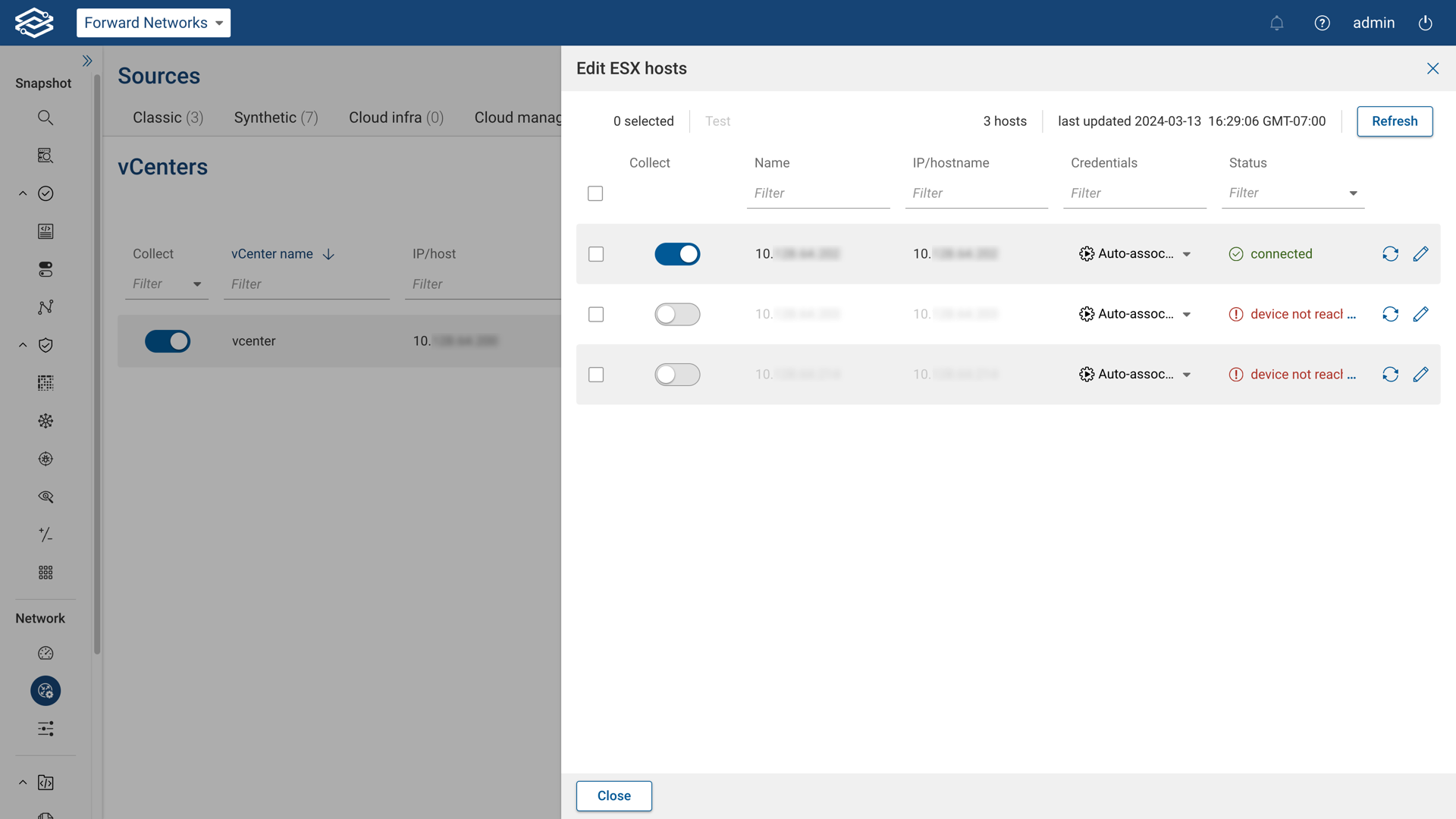
To edit the NSX account, click the NSX host/IP hyperlink, change any parameter, test the connection, and finally, click Save.
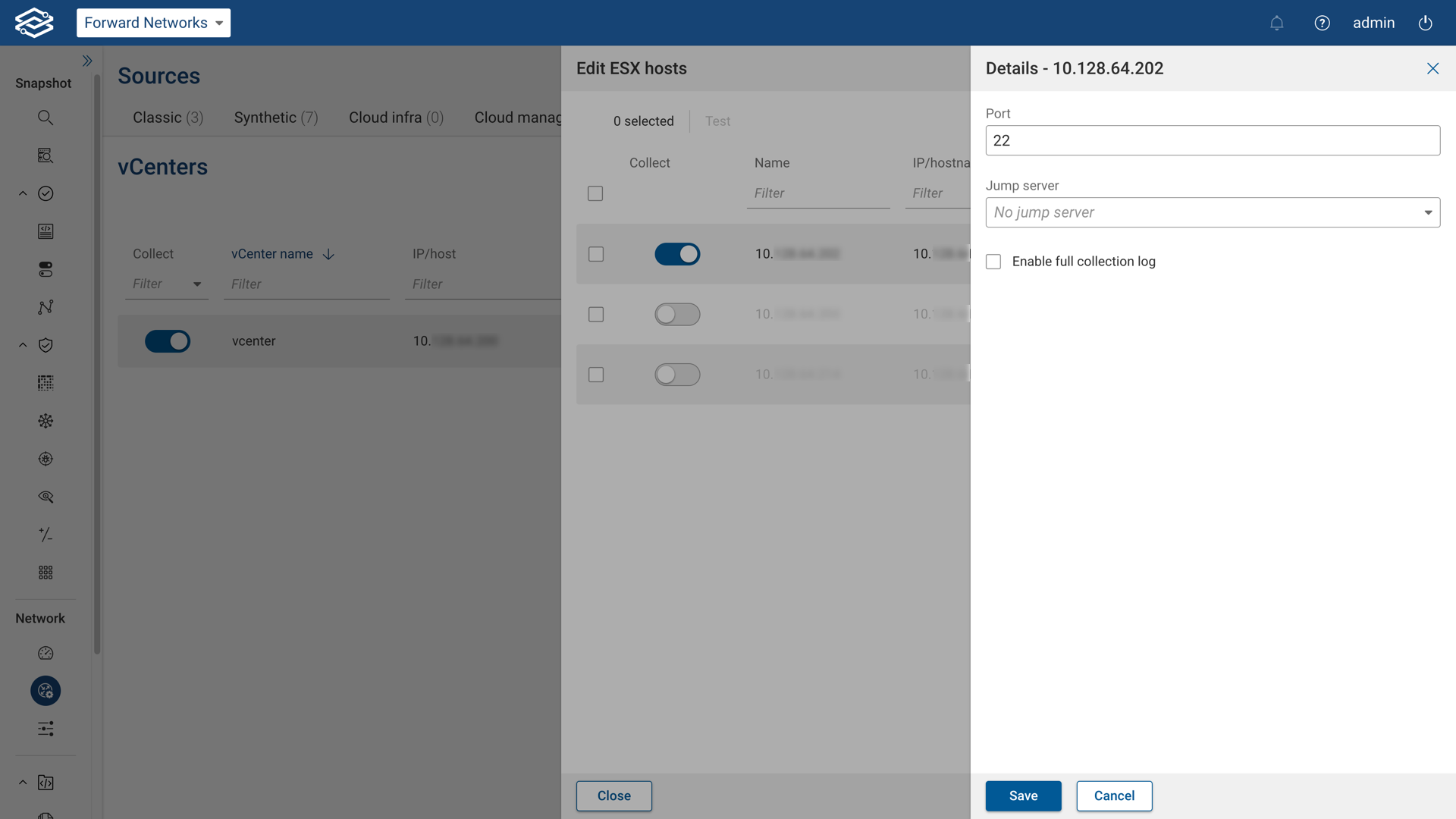
Delete vCenter
To delete a vCenter instance, click the Kebab button on the right, then Delete, and confirm the deletion by clicking Delete again.
